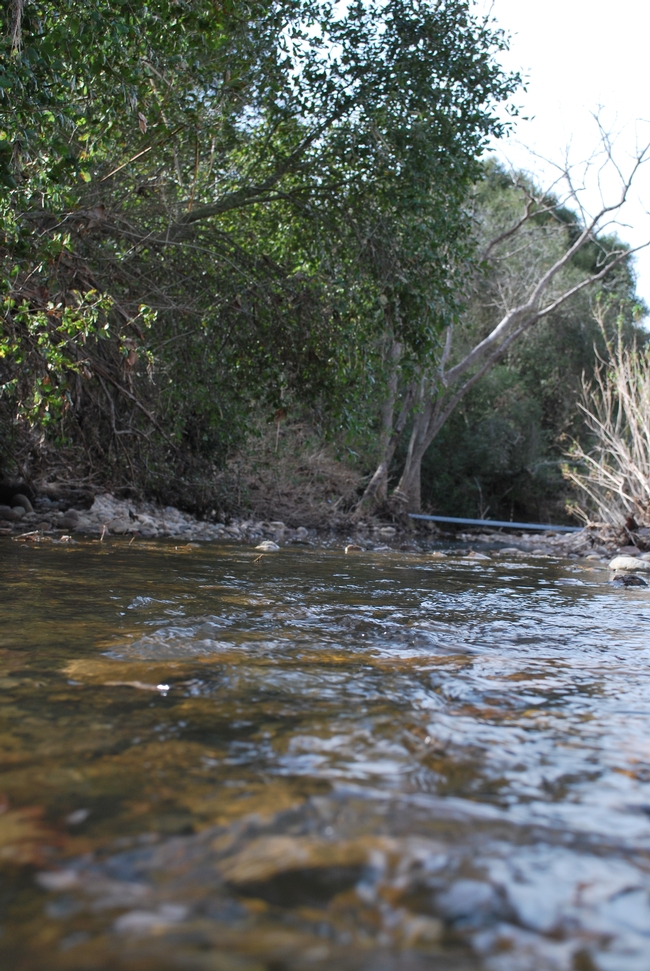From the UC Blogosphere...
Charmed
The third time was definitely the charm.After rain postponed the grand opening of the Davis Bee Collective's Bee Sanctuary...
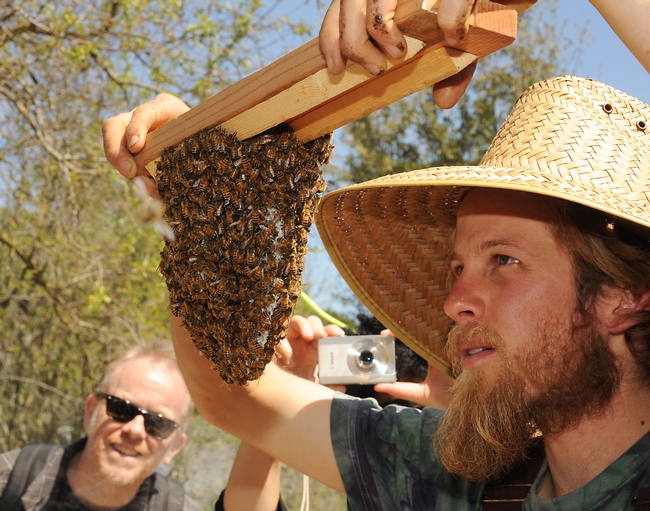
Derek Downey checks the cluster on a newly hived colony. (Photo by Kathy Keatley Garvey)

First-year beekeeper Eva Dopico, a second-grade teacher in Davis, examines one of her newly emerged bees. (Photo by Kathy Keatley Garvey)
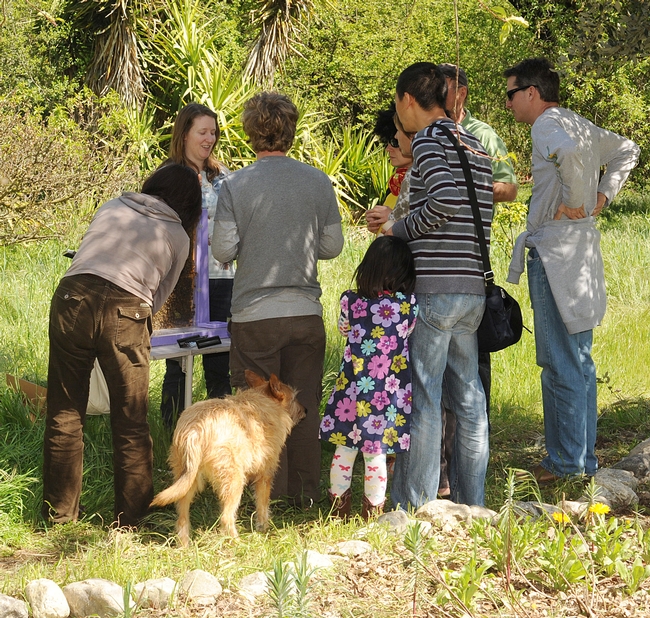
Beekeeper Elizabeth Frost (facing camera), a staff research associate at UC Davis, brought along a bee observation hive. (Photo by Kathy Keatley Garvey)
Shoppers link fruit & veggies to health, but don't buy more
While 77 percent of moms associate fruits and vegetables with good health, purchase intent remains flat at 45 percent, according the Produce for Better Health Foundation’s annual survey of mothers with children age 10 and under,.reported Mike Hornick in The Packer.
Roberta Cook, UC Cooperative Extension specialist in the Department of Agricultural & Resource Economics at the UC Davis, participated in the foundation's annual meeting. she attributed the discrepancy to promotion of specific types of produce.
“One of the problems in our industry is a decline in generic promotion,” she said. “As grower-shippers become larger, they have wanted to take dollars spent on generic marketing internal. They feel they can use it better within their company.
“But that’s not really what the results show us. The mandated programs are trying to expand the total pie,” Cook said. “Because they bring greater dollars together than an individual company can, they can invest in understanding consumers.”
Neonics Creating Quite a Buzz
The neonicotinoid pesticides are creating quite a buzz in the bee world. Research published this week in the Science journal...
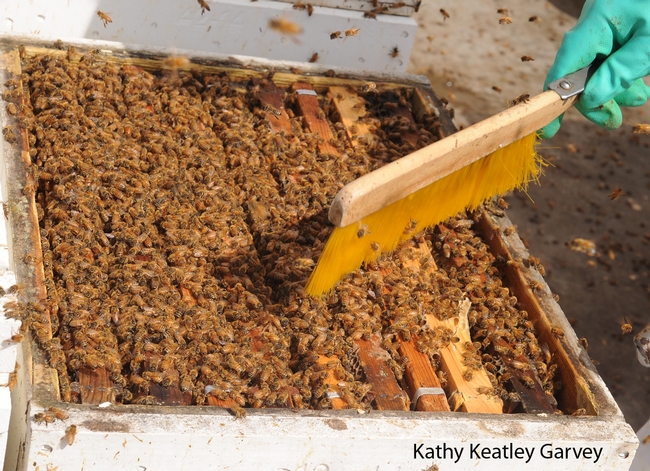
A thriving honey bee colony. (Photo by Kathy Keatley Garvey)
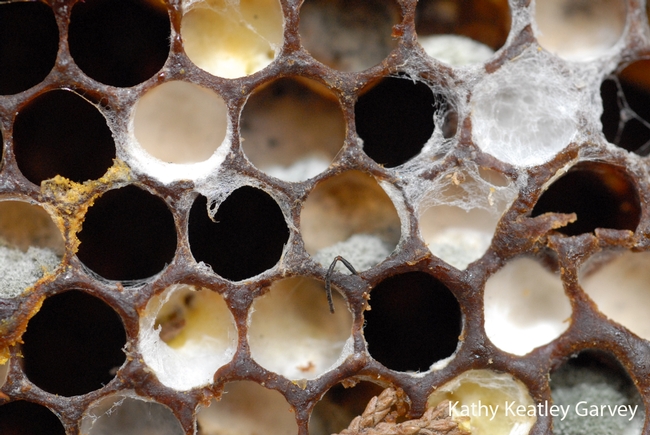
Bees have abandoned the hive in an apparent colony collapse disorder. (Photo by Kathy Keatley Garvey)
Did You Know Streams Grow on Trees?
Picture yourself sitting at a stream bank. You see clear, shining water bubbling down, insects buzzing around the water, and delicate green plants growing at the waters edge. Towering above you are longstanding oak woodlands, providing a reprieving patch of shade in the blistering summer heat. Without these oak woodlands, this stream would probably not be in this pristine condition.
Leaves and other organic material that fall from branches, also known as thatch, contribute to the richness of the soil beneath, allowing for healthy undergrowth. The number and density of the flora that inhabit riparian areas create a sub climate, allowing for cooler summers and warmer winters in the stream community. They also provide hiding places for the animals and a stabilizing system of roots that prevents soil erosion. These are only a handful of the benefits that oak woodlands provide for stream communities.
In San Diego County, there are five major river systems; Santa Margarita River, San Luis Rey River, San Dieguito River, San Diego River, and Sweetwater River. At varying frequency and locations, all of these rivers have oaks along their banks. Oaks may also be found along the many smaller creeks that support the watershed and riparian stream communities. The San Diego River alone has over 20 smaller creeks. These creeks are home to many animal and plant species, including the endangered Arroyo Toad, Southwestern Pond Turtle, and Bell’s Vireo. These species, along with non-endangered native species are in danger of being driven out by invasive pests.
Goldspotted oak borer (GSOB) Agrilus auroguttatus is an invasive pest contributing to the on-going oak tree mortality occurring on federal, state, private, and local Native American lands in San Diego County. Without native oak tree and native shrub cover bigger issues ensue, including harm to animals, increased risk of flood and fire, and a degradation in water quality. The loss of oak trees can directly impact a whole community of insects, fish, small mammals, and even the existence of a healthy stream.
There are federal and state environmental protection laws in place that help reduce or control the impacts of invasive species. Many counties, communities and land conservancy groups have adopted ordinances and programs to protect our environment and our watersheds from harm.
For additional information on this topic visit: http://ucanr.org/u.cfm?ids=2622, http://www.sdcwa.org/habitat-conservation, and http://ucanr.org/sites/oak_range/
They Want the Weather to 'Bee Nice'
"The rain in Spain falls mainly in the plains,” according to a signature song in the musical, My Fair Lady. Don’t tell that...
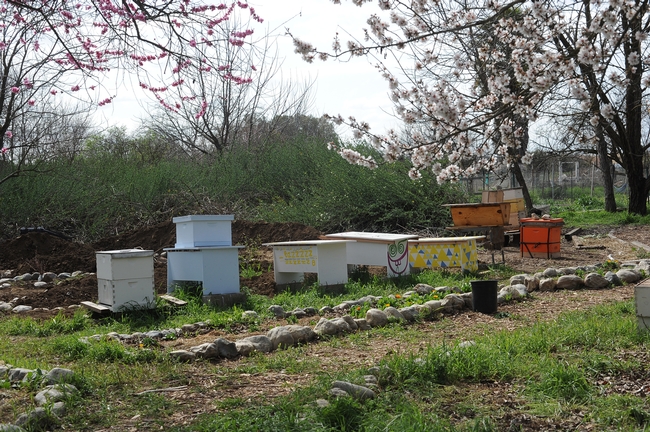
View of the Davis Bee Sanctuary. (Photo by Kathy Keatley Garvey)
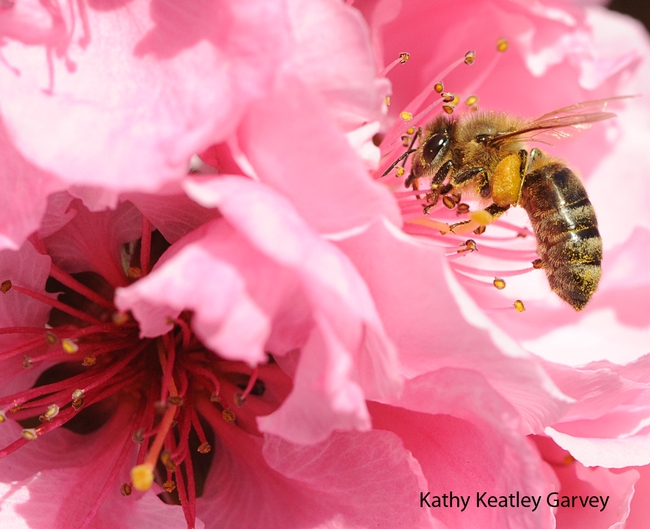
If the weather cooperates, visitors to the Davis Bee Sanctuary can see foragers on the nearby blossoms. This one is on a nectarine blossom. (Photo by Kathy Keatley Garvey)



